BELGIUM
Antwerp

Antwerp
Antwerp
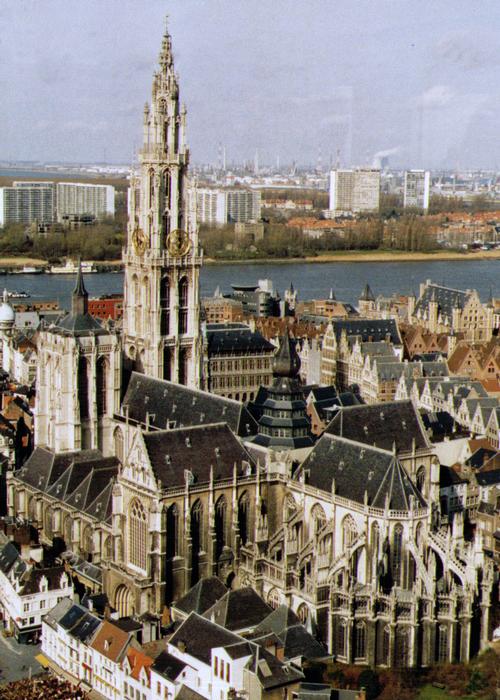 Antwerp Photo: Ad Meskens CC 3.0 Unported no changes made
Antwerp Photo: Ad Meskens CC 3.0 Unported no changes made
Antwerp is a lively port city on the banks of the Scheldt in Belgium. It is the second city in the country and has a beautiful old center and many cultural attractions. In the center you will find the cathedral, the green area and the large market. Visitors are amazed at how intimate and attractive this part of Antwerp is, it has been virtually unchanged for many centuries, with numerous small streets covered with cobblestones.
Antwerp is the city of the arts and one of the greatest painters in Belgium, Peter Paul Rubens, lived and worked in Antwerp. There are many other art museums to visit outside the Rubens House. Antwerp is also a symbol of the good life, there are many restaurants and chocolateries.
Antwerp is also the center of the diamond trade, especially in and around the old Jewish quarter. There is even a diamond museum in Antwerp. Antwerp also has an Art Nouveau neighborhood from the Belle Epoque near Berchem station on the old Zurenborg estate. You will see a number of beautiful residential houses with many style features.
| advertisement |
| Hotels Antwerp |
Location
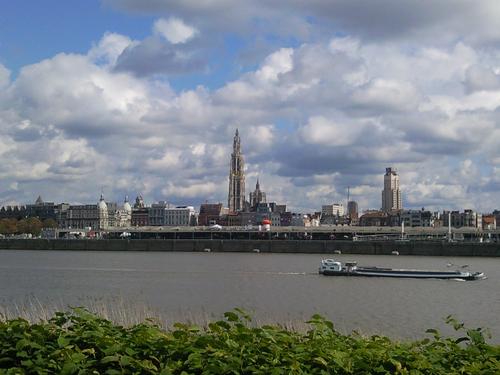 Antwerp river ScheldtPhoto:Lizzyyy89 CC 3.0 Unported no changes made
Antwerp river ScheldtPhoto:Lizzyyy89 CC 3.0 Unported no changes made
Antwerp is located on the banks of the river Scheldt. Most of the city is located on the right bank of the Scheldt. The left bank is connected to the right bank by tunnels. Antwerp is located in Flanders and is the capital of the province of the same name.
Weather
The Belgian climate is clearly maritime and usually mild and the city of Antwerp is no exception. Amid the many days of sunny weather in Antwerp, rainy, gray days are therefore commonplace, regardless of the season. The average temperature during the summer months is 23 degrees Celsius during the day.
July and August are usually the hottest months in Antwerp and also happen to be the wettest, although precipitation is usually quite evenly spread over the year. The sunniest weather can be found during May and August, April and September are often pleasant.
History
Since the foundation of the first settlement, Antwerp has been an important economic and cultural center in the Low Countries.
The history of Antwerp is determined by the river Scheldt, which is connected to the North Sea. The debate over the history of the city's name is divided into two camps. Many residents believe in the myth of the giant Antigoon, who once lived on the Scheldt. This giant demanded toll from everyone for crossing the river. Those who did not pay were cut off a hand until Antigoon himself was killed by the Roman soldier Silvius Brabo. One of Antigoon's hands was then thrown into the river himself (hand throwing became Antwerp). The statue in front of the town hall portrays this event. The less romantic souls among us insist that the city is named after the Roman name for a hill of earth.
When the neighboring city of Bruges fell into decline, Antwerp took over its role as the center of trade in the region. At the end of the 15th century, international trading houses were moved from Bruges to Antwerp. Antwerp's history in this era has been linked to sugar, which was imported from Spanish and Portuguese plantations and then refined for export.
In the first half of the 16th century, Antwerp grew into one of Europe's largest and richest cities. Many foreign merchants lived and did business in the city, which processed hundreds of ships and their cargo in its thriving port every day.
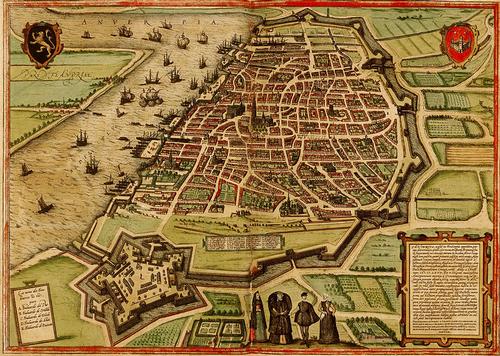 Antwerp1572Photo:Public domain
Antwerp1572Photo:Public domain
There were three notable peaks during Antwerp's golden era. The first was centered around the pepper market in the early 1500's, followed by profitable imports of silver from America. The third peak was related to the textile industry. At the beginning of the 16th century, the city was responsible for about 40 percent of world trade in this market. This successful global trade and prosperity caused a massive increase in the population and ultimately created a cosmopolitan society that is still felt today.
The second half of the 16th century was not very friendly to the city. The city became the center of the religious-political struggle between Catholic Spain and the Protestant north of the Low Countries. In a period of 30 years, Antwerp was ravaged by the Iconoclasm in 1566, the Spanish Fury in 1576 and the fall of Antwerp in 1585.
The Spanish Fury cost about 6,000 lives and nearly 1,000 homes burned down. The river Scheldt was closed to trade for the next 200 years, which ruined the city's economy. When Antwerp fell, intellectuals, merchants and Protestants fled the city. Most of them went north to the United Provinces and contributed to the Dutch Golden Age around Amsterdam.
The river Scheldt was reopened to trade in 1863. Apart from the interruptions of the First World War and the Second World War, the city's economy grew. The Germans destroyed much of historic Antwerp with their bombings during World War II, resulting in the modern architecture that now dominates parts of the city.
In 1993 Antwerp was nominated as the European Capital of Culture, a precursor to the return to international recognition. Today, the city is a respected fashion city, a host to cultural events and a great travel destination.
Sights
The best part of Antwerp is perhaps just strolling through the old city. There are nice shops, restaurants and bars everywhere. You will pass unnoticed sights such as the Steen, the Bourla and the Grote Markt. The city center of Antwerp has many beautiful places that are not always easy to find. If you want to see the city from a completely different side, you can take a three-hour molting walk underground. Some important sights are described below.
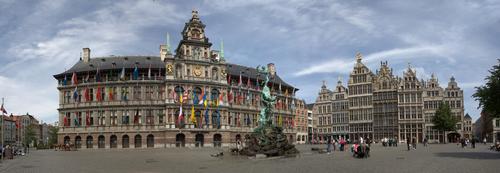 Antwerp Grand place with cityhallPhoto: Maros CC 3.0 Unported no changes made
Antwerp Grand place with cityhallPhoto: Maros CC 3.0 Unported no changes made
The Grote Markt is a huge car-free square that is actually triangular in shape and is dominated by one of the city's most imposing monuments, the Town Hall. The town hall dates from 1565 and is known for its facade, a successful mix of Italian and Flemish architectural style. The Grote Markt is bordered on two sides by a series of Renaissance-style guild houses, the majority of which were renovated in the 19th century. One of the most impressive of these guild houses is number seven, where you see a statue of Saint George and the dragon. There are plenty of cafes with terraces in the square itself.
The Boerentoren is an early skyscraper and the tallest building of its kind in Antwerp. The Boerentoren is the second tallest building after the considerably older Cathedral of Our Lady. The skyscraper dominates the old city. The Boerentoren is about 96 meters high and this beautiful Art Deco monument was completed in 1930.
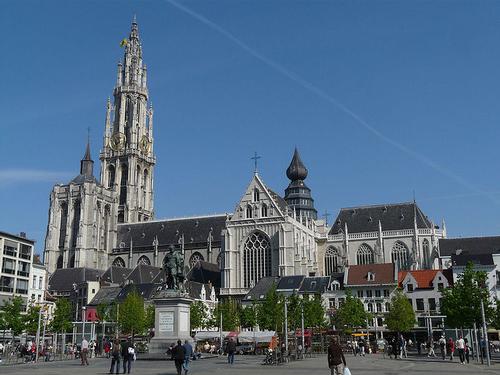 Antwerp CathedralPhoto: Mattana CC 2.0 Generic no changes made
Antwerp CathedralPhoto: Mattana CC 2.0 Generic no changes made
One of the most famous and important sights in the center of Antwerp is the Cathedral of Our Lady. Listed as a World Heritage Site, this Gothic cathedral has a high spire reaching almost 125 meters in the air. Inside you can see beautiful 16th-century stained glass windows, many restored frescoes that were actually once painted over and a number of paintings by the local Antwerp artist Peter Paul Rubens. The cathedral is visited by about 400,000 people a year.
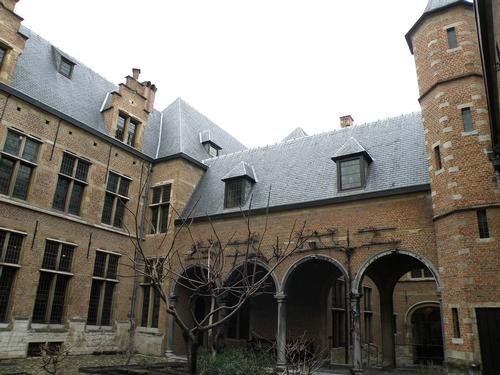 Antwerp Rockox housePhoto: Torsade de Pointes CC 3.0 Unported no changes made
Antwerp Rockox housePhoto: Torsade de Pointes CC 3.0 Unported no changes made
The imposing 17th-century monument the Rockoxhuis is a striking mansion that was once owned by the Antwerp mayor Nicolaas Rockox. In the center of the Rockox House is a courtyard, around which the house is built. It is beautifully decorated in a traditional Flemish style, with a small collection of paintings, some of which from Rubens, who was a friend of the mayor.
Antwerp has a large number of museums that are worth visiting, such as the Museum Plantin-Moretus and the Rubens House, where the famous artist Peter Paul Rubens used to live and work. The Royal Museum of Fine Arts is also worth a visit. This museum provides a complete overview of the artistic achievements of Flemish artists. The Fashion Museum in the National Street is the beating heart of Antwerp as the fashion capital of Belgium.
The newest museum and a major attraction is the Mas (museum on the river). This museum, which opened in 2011, has a permanent exhibition from the collection of the former National Museum of Ethnology and the Maritime Museum. On the second floor there is room for temporary exhibitions. The view from the roof over Antwerp is phenomenal.
Tips
The Antwerp Zoo is located in a very central location in the heart of the city, next to the Central Station. This was originally considerably larger than the current size of 10 hectares. These include giraffes, penguins, hippos, tapirs, elephants, tamarins, and reptiles, all of which are housed in themed enclosures of varying sizes.
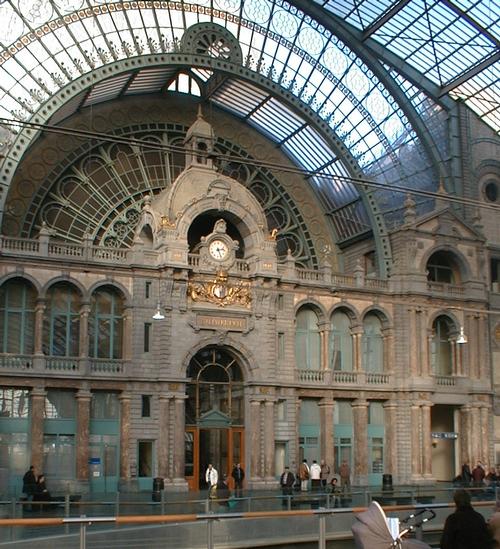 Antwerp Central StationPhoto: Carolus CC 3.0 Unported no changes made
Antwerp Central StationPhoto: Carolus CC 3.0 Unported no changes made
The Central station is one of the most beautiful station buildings in Europe. After a major renovation in which the historic station has been converted from a terminus station to a train station with through tracks, a building has been built of great architectural importance. The mix of an old station building with a beautiful glass dome and new modern underground platforms on different levels make Antwerp Central an attraction in itself.
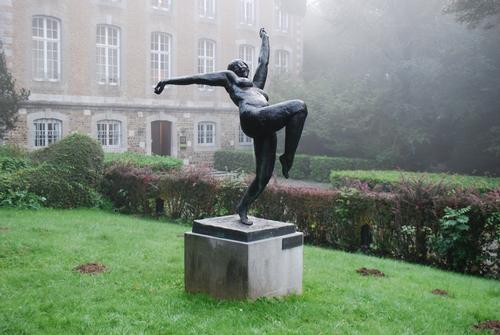 Antwerp Middelheim statue by Rick WoutersPhoto:Jean Housen CC 2.0 no changes made
Antwerp Middelheim statue by Rick WoutersPhoto:Jean Housen CC 2.0 no changes made
The Middelheim Museum is unique in Antwerp. In a special setting, the open-air museum offers a fascinating overview of more than a hundred years of visual art. The museum park is free to enter. You will see images of Henry Moore, Auguste Rodin, Rik Wouters and many modern masters.
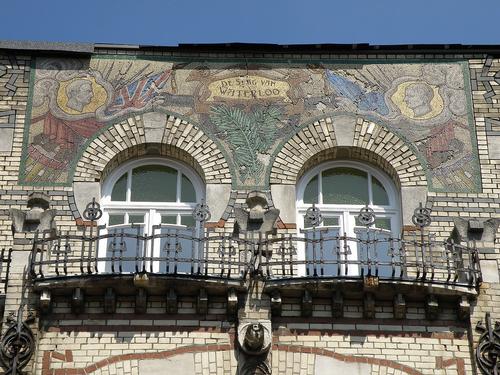 Antwerp Berchem Arts-Nouveau Photo: Publiek domein
Antwerp Berchem Arts-Nouveau Photo: Publiek domein
The area around Berchem train station is called the Belle Epoque district by Antwerp residents. This area is worth walking or cycling through, there are many special houses in the Art Nouveau style. The whole atmosphere that this neighborhood evokes is different from the rest of Antwerp and because it is a bit further away, there are not many tourists.
Useful links Antwerp
BBC Country ProfilesWorld Fact Book Explore all Countries
How to call
Last updated June 2025
Copyright: Team - The World of Info